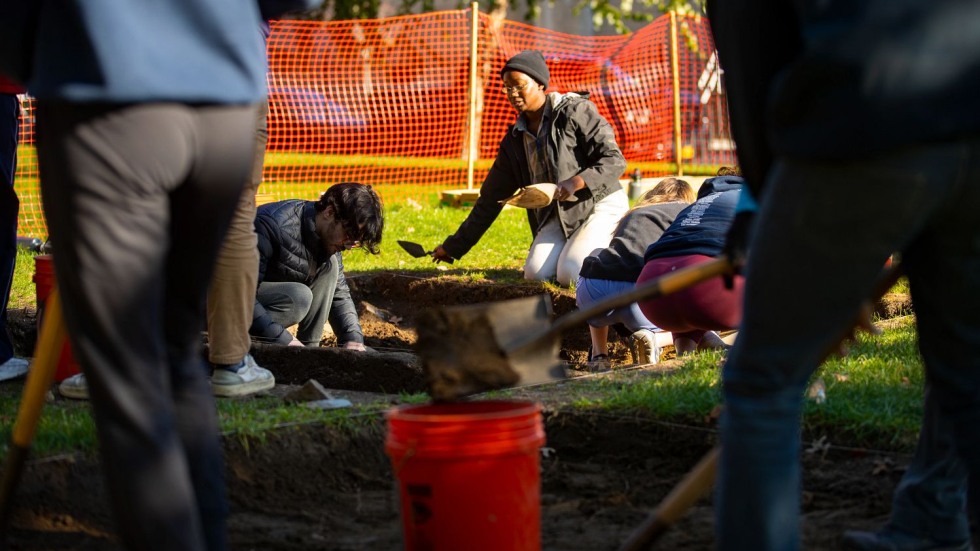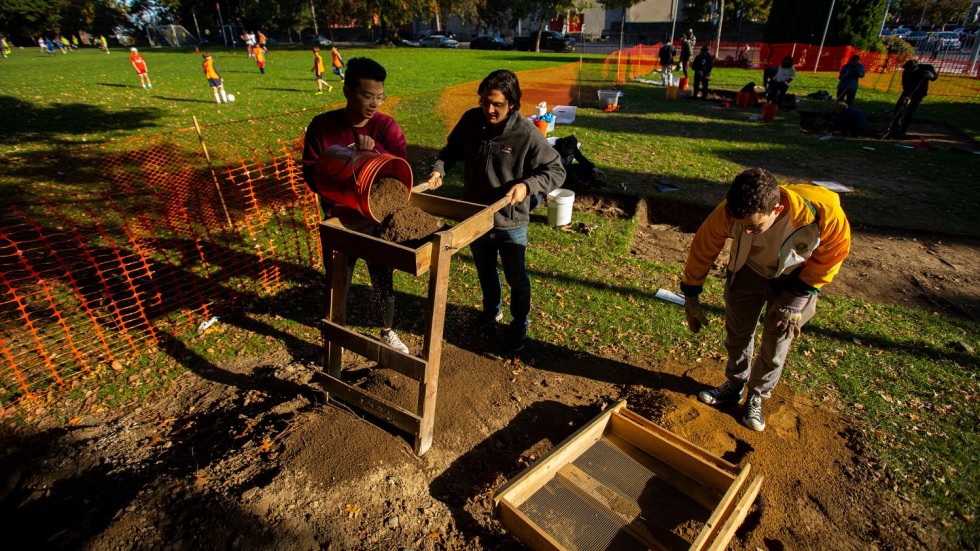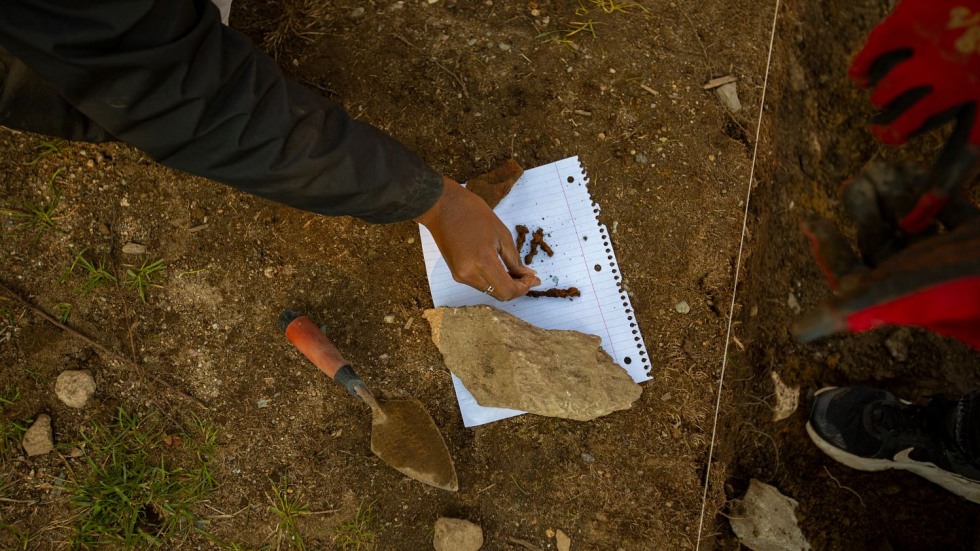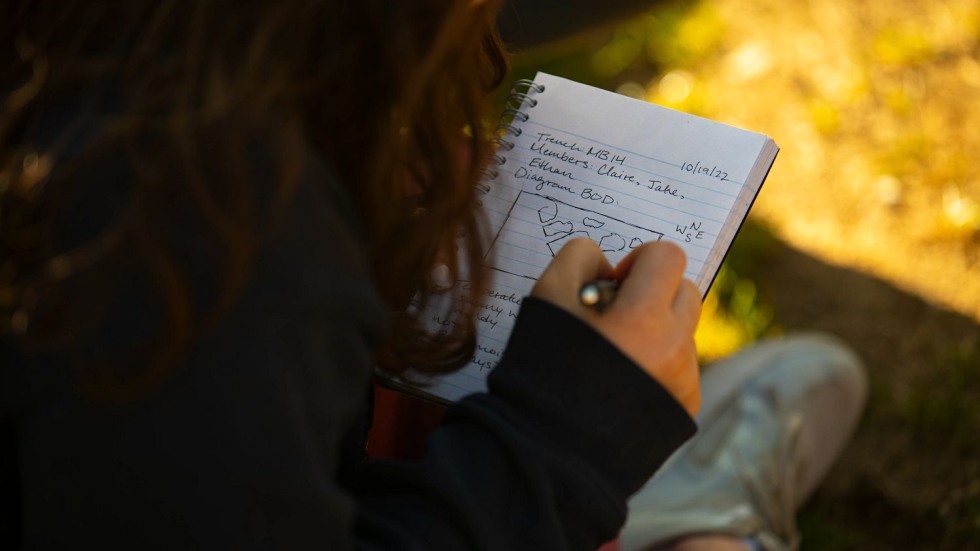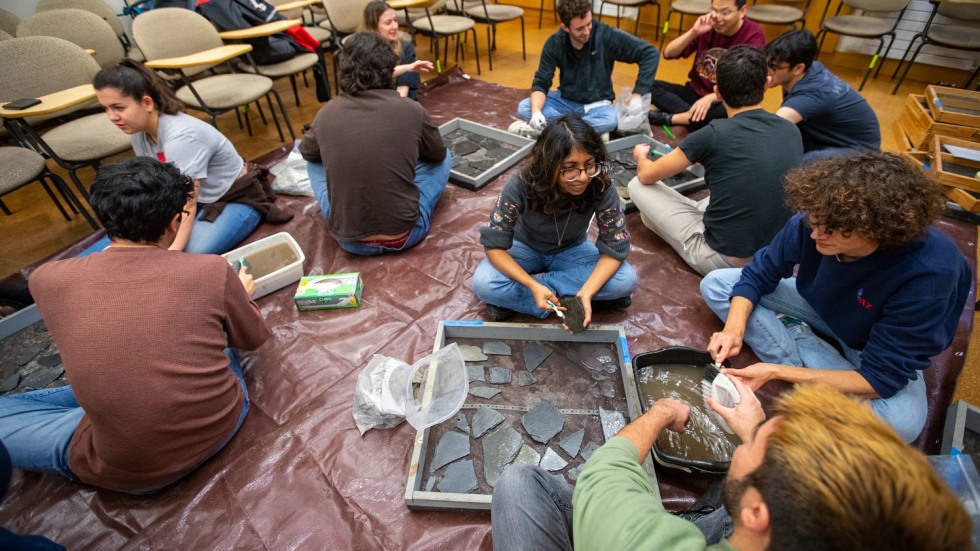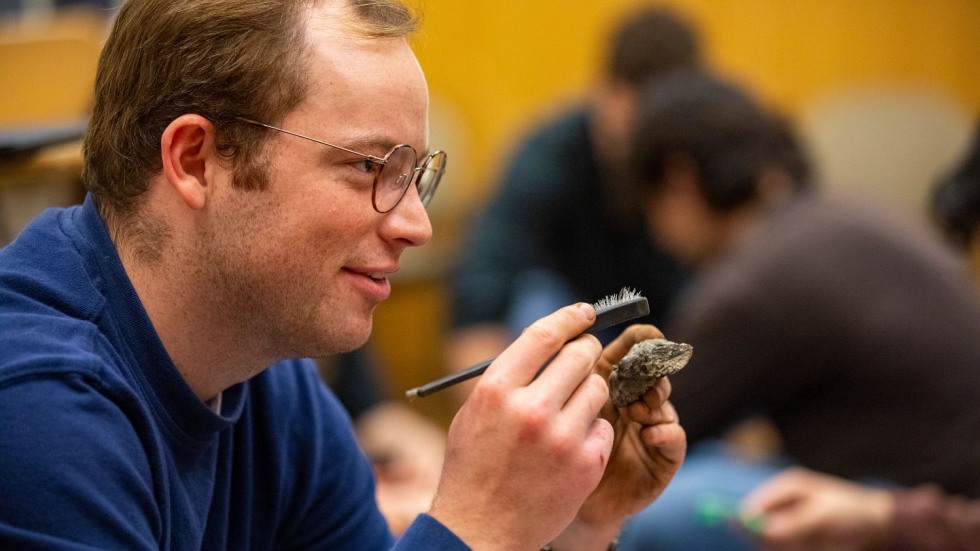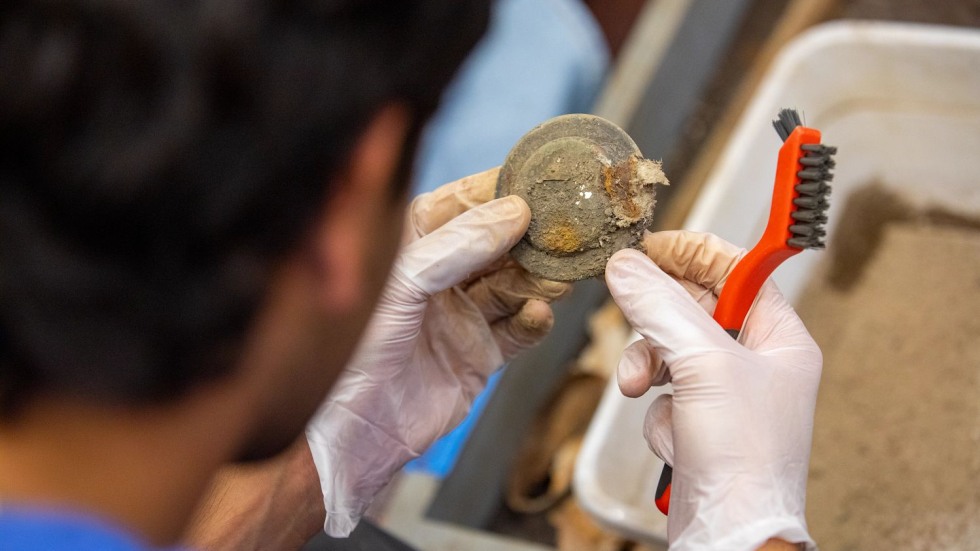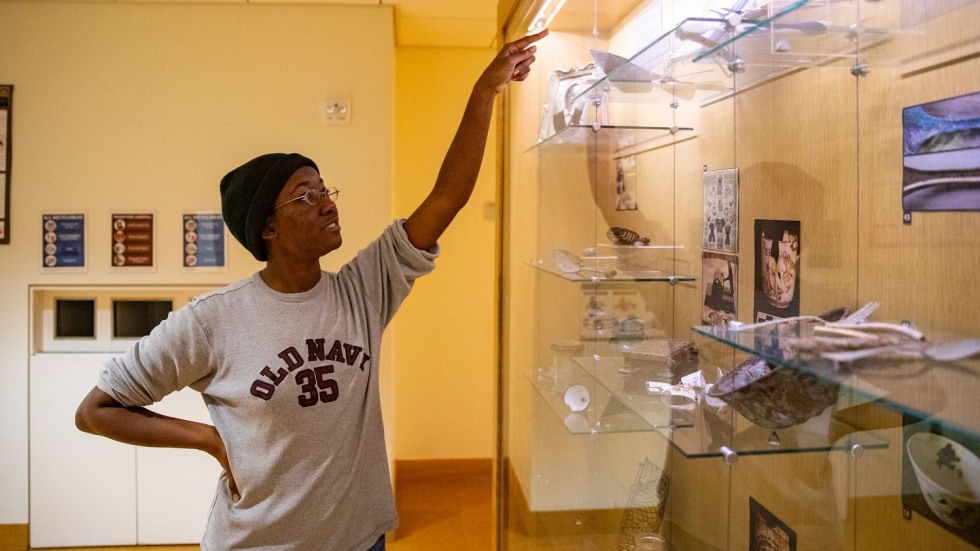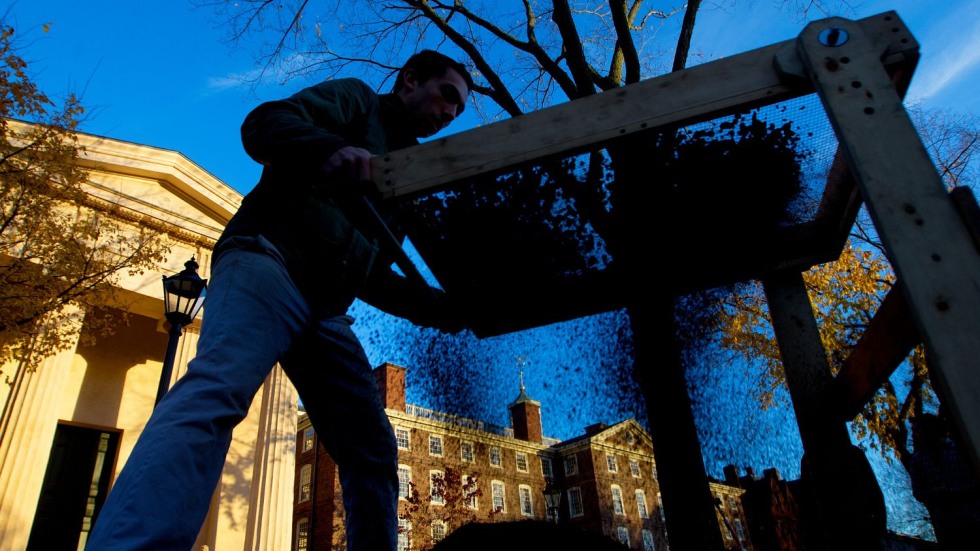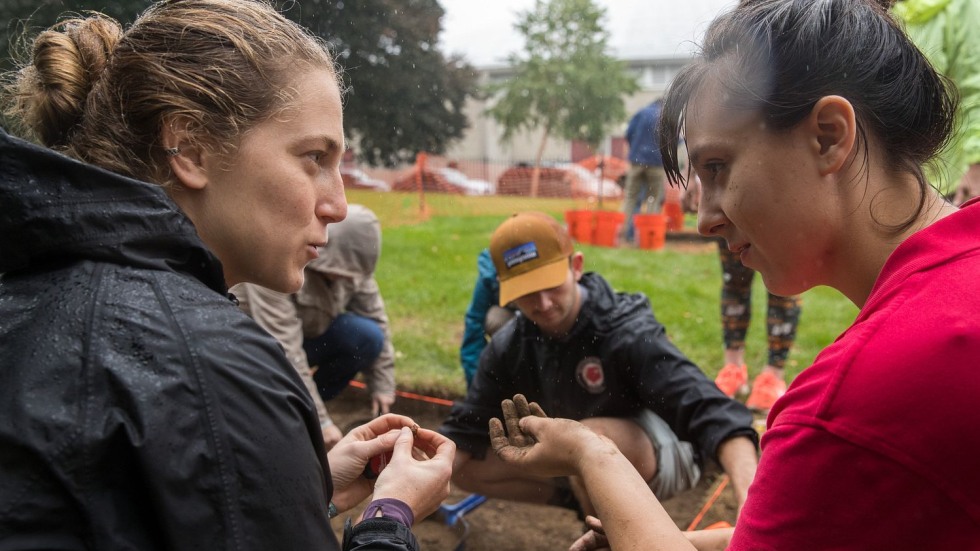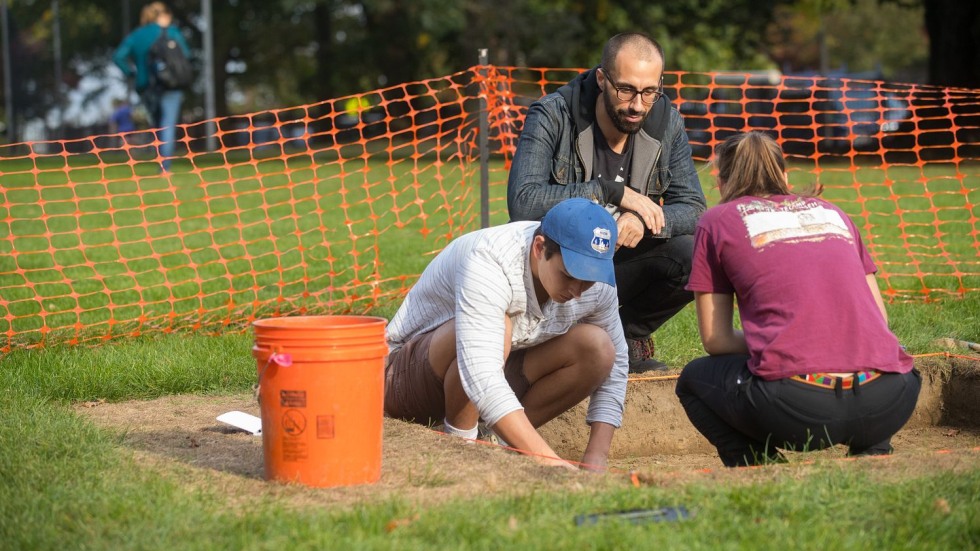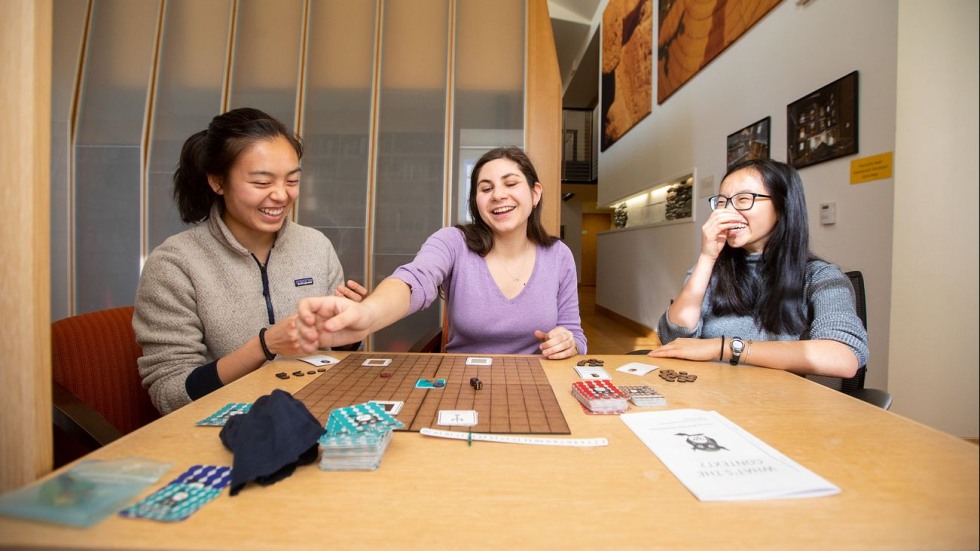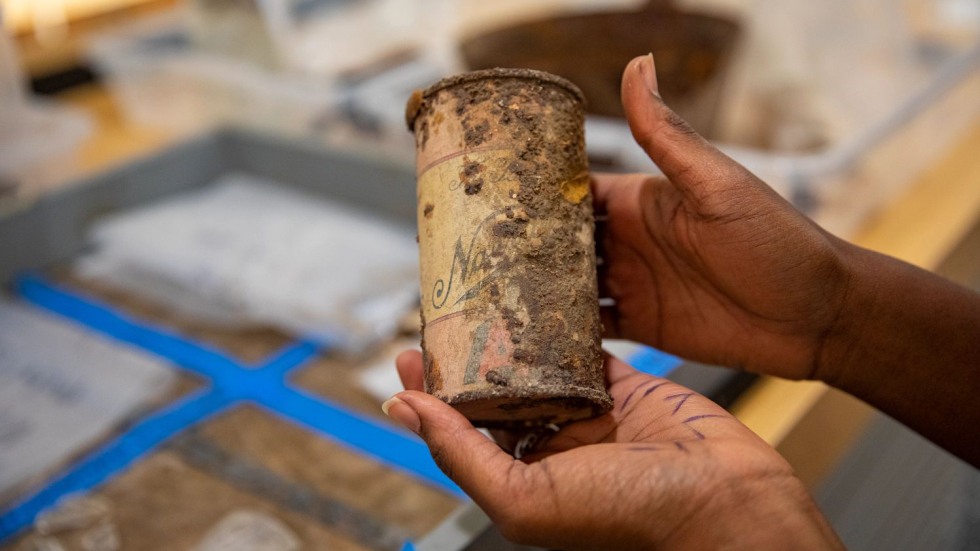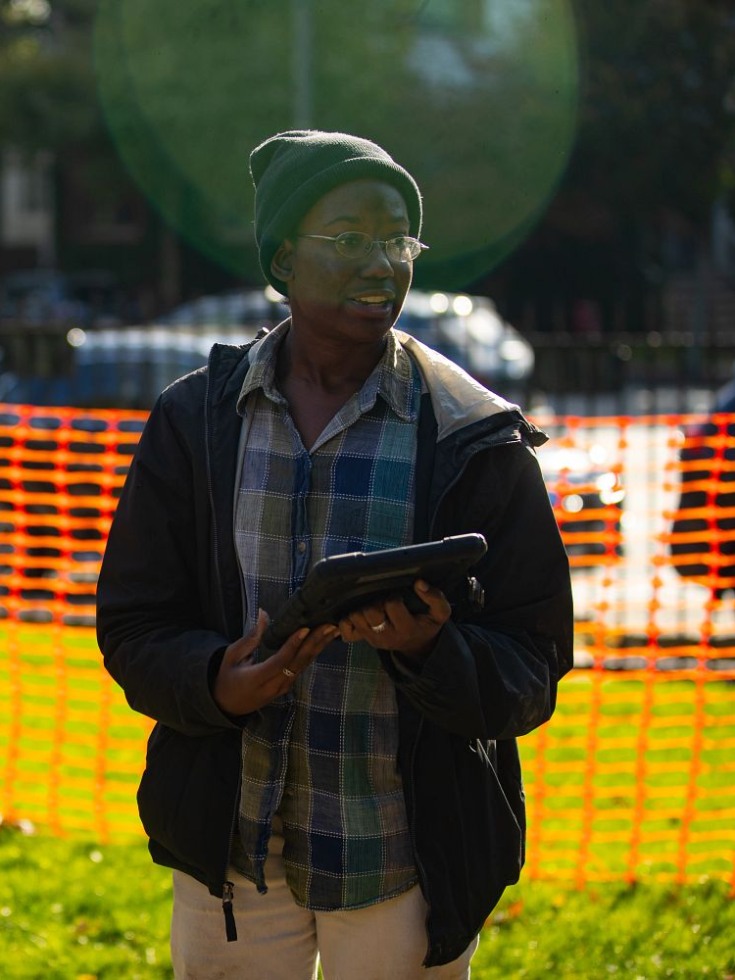PROVIDENCE, R.I. [Brown University] — An 87-year-old Narragansett Beer can. An 1860s fabric crimping iron. A handful of cooking and baking instruments from Germany. And a cup and saucer commemorating the 100-year anniversary of the Gaspee Affair, one of the earliest rebellions in the lead-up to the American Revolution.
Those are just a few of the extraordinary items students have unearthed in one of Brown University’s most popular and buzzed-about courses, Archaeology of College Hill.
Offered at Brown every fall, the introductory archaeology course takes students out of the classroom and into the fresh air of College Hill, a Providence neighborhood so rich in history that there’s always something more to discover underground. Over several weeks, students use trowels, sifters, toothbrushes and trays to dig up, clean and analyze artifacts they discover underground, working together to chronicle their findings on a class Facebook page.
Over the course’s 17-year history, students have learned the principles of archaeology through hands-on work at multiple sites in the area, including the First Baptist Church in America, the John Brown House and Brown’s own Quiet Green. But for the last seven years, they’ve been focused on a site at the corner of Hope Street and Lloyd Avenue, where secrets of a Gilded Age family lay buried for more than a century. The plot of land was once the site of the Sack family house; its patriarch, A. Albert Sack, owned a lucrative textile mill in North Providence.
“There’s so much history beneath our feet, especially in Providence,” said Erynn Bentley, a Ph.D. student at Brown’s Joukowsky Institute for Archaeology and the Ancient World and the instructor of the Fall 2022 course. “This area has changed, grown and reinvented itself so many times over the last few centuries. Looking underground can not only help us understand when and how change happened but can also give us a window into the lives of people from previous generations.”
